Bob Batchelor's Blog, page 2
August 18, 2025
PSYCHOLOGICAL SAFETY THROUGH THE EAT MODEL: A LEADER'S ROADMAP
In my recent conversation with Donald Thompson for WRAL TechWire, we explored the profound role of psychological safety in today’s workplace. For me, the discussion reinforced just how vital this idea is—not just as a feel-good concept, but as a business imperative. In the EAT Model—Engage, Adapt, Transform—psychological safety is not an afterthought. It is a core driver of how leaders create resilient, innovative, and high-performing cultures.

Donald noted that, in a time when trust in institutions has eroded, employees often trust their employers more than they trust media or government. That’s a remarkable shift—and a responsibility. Leaders have become stewards of trust, which means our ability to create a safe environment for ideas, questions, and even dissent is directly tied to business performance.
That’s Engage—the first pillar of the EAT Model. Engagement here is more than “communication” in the corporate sense. Rather, it is focused on creating authentic, human connections that give employees permission to share their perspective without fear of retribution. Without that foundation, psychological safety can’t take root.
But psychological safety isn’t static. This is where Adapt comes into play. Too often, adaptation is seen as something purely external—adjusting to market shifts, competitive pressures, or new technologies. In the EAT Model, adaptation is both external and internal. Leaders must continuously recalibrate their own behaviors, language, and even emotional intelligence to reinforce safety.
But how do leaders operationalize this idea?
Responding constructively to mistakes
Actively seeking feedback on how safe people feel
Making visible changes in response
Don’t forget, though, the organization’s role in creating psychological safety. Organizations must evolve policies and practices to reflect new realities, thereby shifting from one-way communication to genuine dialogue, for example, or embedding inclusive decision-making into daily routines.
When leaders commit to engagement and adaptation over time, transformation occurs. This is the third pillar of the EAT Model: cultural change that becomes part of an organization’s DNA. In practice, transformation looks like higher retention, more innovation, and stronger collaboration. But at a deeper level, it’s about creating an enduring culture of trust and learning. Then, psychological safety becomes a cultural safety net when the organization needs resilience, like weathering economic downturns, facing competitive disruption, or even experiences societal crises. As Donald pointed out, psychological safety is not only the right thing to do, it’s a competitive advantage.
From my perspective, applying the EAT Model to psychological safety gives leaders a clear roadmap:
Engage with empathy and authenticity
Adapt with both structural and personal change
Transform by embedding safety into the culture
The result is a workplace where people feel safe to speak up and are motivated to contribute their best thinking. This is an important outcome. In an era where the quality of ideas can determine the survival of an organization, that’s more than a nice-to-have. It’s a necessity.
The Leadership Value PropositionThe beauty of applying the EAT Model to psychological safety is its scalability. It works in small teams, global corporations, and even cross-cultural contexts where trust and open dialogue are harder to build. For leaders in marketing, communications, and digital industries—where creativity, speed, and collaboration are paramount—the EAT Model offers a lens for diagnosing cultural barriers and a roadmap for removing them. The return on investment is tangible: stronger employee retention, better decision-making, and a workforce that innovates faster than the competition.
Leaders who want to operationalize psychological safety—and reap its competitive benefits—should explore how the EAT Model can be integrated into their leadership practice. By focusing on engagement, adaptation, and transformation, you don’t just create safer workplaces—you create stronger, more resilient organizations.
August 13, 2025
THE EAT MODEL -- THE BUSINESS CONTEXT FOR UNDERSTANDING STORYTELLING AND NARRATIVE

In an age where markets shift overnight and attention spans shrink by the second, success in marketing and communications demands more than clever campaigns. Success requires a framework for lasting impact.
This is where the EAT Model -- Engage, Adapt, Transform -- comes in.
I initially created the EAT Model to study culture shifts and history, but have been adapting it as a mental model to help professionals in Marketing, Communications, Public Relations, Writing/Editing, and others understand the underlying forces that drive messages.
🚀 Engage: Connecting deeply with audiences through relevant stories, authentic voice, and a clear value exchange.
🚀 Adapt: Responding — not just to market trends, but also recalibrating internally, such as revisiting strategy, brand positioning, and even team thinking to stay ahead of change.
🚀 Transform: Creating lasting shifts in perception and behavior that position your brand as indispensable in the customer's world.
Applied to marketing and communications, EAT becomes a strategic filter. It helps leaders diagnose why messages aren't landing, identify where brand narratives are lagging, and design campaigns that not only win attention, but sustain momentum. By rooting decisions in EAT, organizations can move from reactive tactics to intentional, measurable transformation.
Applied to real-world marketing and communications challenges, the EAT Model helps professionals think more strategically, analyze campaigns with deeper insight, and ensure initiatives evolve in sync with audience expectations and business goals. The strength of the tool is that it provides a critical thinking lens for why and how to do it—producing communications that are both creative and commercially effective. By embedding EAT into planning, leaders gain a competitive advantage: they can craft campaigns that resonate more deeply, adapt faster than competitors, and deliver transformation that moves the needle for both brand and business.
August 11, 2025
THE EAT MODEL: UNDERSTANDING CELEBRITY BRANDING THROUGH A CULTURAL LENS

When I began studying American culture decades ago, I noticed something: most scholars and cultural commentators described popular culture as if it were an object. A thing you could hold up and label — a Picasso painting, a baseball card, a Marvel comic book.
While this approach had value for cataloging and analysis, it missed the spark. The real action of culture is not static; it’s dynamic. Popular culture is not just the object itself — it’s the rush of feeling when you hear a song for the first time, the charge of energy in a crowded theater as the lights dim, or the sense of belonging when you put on your favorite team’s jersey.
Culture is not a noun — it’s a verb. Something that happens to us, and that we, in turn, help create.
This shift in perspective — from static to dynamic — led me to develop the EAT Model: Engage, Adapt, Transform. Initially born from my work as a cultural historian, the model captures how culture is lived and experienced, and how brands — particularly celebrity brands — generate lasting meaning.
Engage: Creating the SparkThe EAT model captures how culture is lived and experienced, and how brands — particularly celebrity brands — generate lasting meaning.
Every enduring celebrity brand begins with Engage. Engagement is the spark — that first connection that makes someone stop, look, and feel something.
This isn’t simply visibility. True engagement hits on an emotional frequency. Think about Robert Downey Jr.’s emergence as Iron Man. He wasn’t just another actor in a superhero role. His personal story of struggle, redemption, and charisma aligned perfectly with the Marvel cinematic moment. Fans weren’t just buying tickets for Iron Man; they were buying into the Downey comeback narrative.
Starbucks achieved something similar when it became more than a coffee company. In my research with Kaitlin Krister Schrock, we coined the term radical sociodrama to describe how Starbucks acts as a stage where customers perform aspects of their identity. The company went far beyond selling coffee. Starbucks created a lifestyle cue, a way to project taste, refinement, and belonging.
Engagement, then, is more than grabbing attention. The focus is on connecting in a way that makes the audience feel seen and understood — the necessary ignition point for everything that follows.
Adapt: The Bridge Between Engagement and TransformationMost people think “adapt” means simply react to change — adjust your schedule, update your branding, follow a trend because it’s gaining attention. That’s part of it. However, in the EAT Model, Adapt is much richer and more integrated.
Adapt is the bridge between engagement and transformation. It’s where what you have connected with externally meets the shifts happening internally — in your mindset, values, and identity — and the two reshape each other.
This is the visible, situational adjustment:
A musician evolves their sound to reflect changing cultural tastes.
A company updates its messaging in response to a social shift.
A public figure refines their tone after a major life change or cultural event.
This kind of adaptation is responsive, but rooted in what came before — the surface expression of something deeper.
This is where Adapt becomes transformational in its own right:
Reframing perspectives — The change outside prompts a shift in how you see the world.
Integrating new meaning — You update your internal “why” to align with new realities.
Evolving identity — You absorb external input in a way that reshapes who you are and how you’ll approach the future.
Robert Downey Jr.’s post-Iron Man career illustrates both. Externally, he capitalized on the Marvel platform with smart role choices. Internally, he reframed his public identity from “Hollywood cautionary tale” to “creative force and philanthropist,” weaving his hard-earned credibility into every project.
Starbucks, too, has continually adapted both externally and internally. It didn’t just localize menus overseas; it rethought what “the Starbucks experience” meant in cultures with different coffee traditions, integrating those insights back into the brand’s global identity.
Adapt is not “bend so you don’t break.” It’s “absorb, integrate, and evolve,” so that the transformation that follows is authentic, sustainable, and resonant.
Transform: Moving From Brand to Cultural ForceThe third stage — Transform — is where a brand transcends category and becomes part of the cultural fabric. This is where a celebrity or brand moves beyond selling products or performances to influencing values, beliefs, and identity.
For example, Oprah Winfrey transformed from talk-show host to cultural institution by consistently connecting her brand to personal growth, empathy, and shared experience. LeBron James transformed from basketball superstar to social advocate and education innovator.
But transformation has a double edge. When celebrity branding becomes about visibility for its own sake, it can erode trust, polarize communities, and hollow out the very connections it set out to build. The EAT Model challenges us to ask: What are we transforming into? Are we creating deeper connection and shared meaning, or reinforcing division and performance over substance?
Why the EAT Model Matters in a Celebrity-Obsessed AgeIn today’s world, celebrity branding is not limited to entertainers or athletes. Social media has turned “being a brand” into a cultural expectation. CEOs, educators, nonprofit leaders, and even students are urged to curate their personal brand.
There are benefits to this — clarity, connection, and influence — but also costs, including self-censorship, constant performance, and the pressure to measure worth in clicks and likes.
The EAT Model offers a roadmap for navigating this landscape. It’s not a checklist, but turns thinking about branding and thought leadership into a mindset that recognizes cultural connection as a living, participatory process.
Applying the EAT ModelWhether you’re a celebrity, an emerging entrepreneur, or someone simply looking to build a meaningful personal presence, the EAT Model offers three clear imperatives:
Engage — Spark emotional connection that makes people feel seen.
Adapt — Balance external responsiveness with internal recalibration, so your evolution is both strategic and authentic.
Transform — Create meaning that lasts, shaping not just transactions, but the cultural conversations people care about.
When applied with intention, this framework can help avoid the traps of superficial branding and focus instead on the power of authentic cultural influence.
The Cultural Historian’s EdgeWhy approach celebrity branding through a historian’s eyes? Because history reveals the patterns: the way branding has evolved from product marks to cultural symbols, and how engagement, adaptation, and transformation have driven that evolution.
History reveals the patterns: the way branding has evolved from product marks to cultural symbols, and how engagement, adaptation, and transformation have driven that evolution.
From the rise of early consumer icons to global mega-brands, the same cultural mechanics repeat. Understanding these changes allows you to see where branding is going next, not just where it has been.
The EAT Model is my way of translating decades of cultural insight into a tool for today’s world — one that helps us connect, evolve, and lead without losing sight of the values that make connection meaningful in the first place.
For more on the EAT Model and celebrity branding, listen to “Theories of Celebrity Branding” wherever you like to listen to podcasts. Tune in here.
August 6, 2025
UNPACKING FAME, INFLUENCE, AND IDENTITY: WHY "THEORIES OF CELEBRITY BRANDING" MATTERS NOW MORE THAN EVER
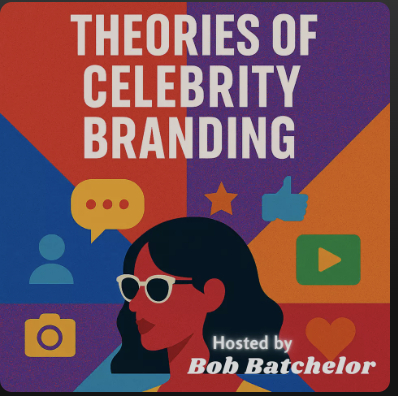
“Theories of Celebrity Branding” — A podcast and university course, hosted by award-winning cultural historian Bob Batchelor
From red carpets to YouTube thumbnails, Super Bowl commercials to podcast interviews, we live in a world shaped by celebrity. We don’t just consume culture—we consume people: their stories, values, failures, and reinventions. This intersection of identity, media, and influence isn’t just noise or distraction—it’s a language. And learning how to decode that language is a critical skill for anyone navigating the modern media ecosystem.
Understanding the value of branding and branding history, I launched Theories of Celebrity Branding, a podcast and online (asynchronous) course designed to explore the cultural machinery behind fame, influence, and branding in the 21st century. Whether you are a college student preparing for a communications career or a seasoned marketer wrestling with the pace of change, this podcast series offers insights into how personal and public identities are built, managed, and monetized today. And, what better way to get at branding and celebrity than to analyze it in an online course.
A Podcast That Decodes the Culture of CelebrityThe podcast version of Theories of Celebrity Branding is not just a catchy way to deliver lectures in an online course —it’s a cultural myth lab.
Each episode explores big ideas about branding, storytelling, media evolution, and leadership through the lens of celebrity. But this isn’t about tabloids or gossip. The podcast focuses on examining why Taylor Swift’s rebranding worked, how Oprah Winfrey built generational trust, and what role AI is playing in shaping how we define identity, authorship, and authenticity.
We tackle topics like:
The globalization of branding and how companies like Kimberly-Clark reframe messaging for global markets.
The evolution of thought leadership and how public figures like Brené Brown and LeBron James use storytelling to build emotional resonance.
The ethics of AI-generated content in a world of deepfakes and algorithmic curation.
How creators like Cecilia Blomdahl or bands like The Hot Sardines use social platforms to craft global personal brands.
Each episode integrates academic theory with real-world experience—from advising C-suite leaders to writing bestselling books like Stan Lee: A Life, The Gatsby Code, and The Authentic Leader.
The result? A podcast that doesn’t just explain celebrity branding—it empowers you to understand your own story and how to share it effectively.
📚 A Course That Prepares Students for the Real WorldWhile the podcast is open to everyone, it runs parallel to the course I teach at Coastal Carolina University in the Department of Communication, Media, and Culture, also named Theories of Celebrity Branding.
Offered both in summer and in Fall 2025, this class pushes students to think critically about fame, media, influence, and identity. It’s not just theory—it’s strategic communication, media literacy, popular culture, history, marketing, and career development rolled into one.
Students learn to analyze how influence is created and sustained—and how they can develop values-based personal brands of their own.
We dive deep into my EAT Model—Engage, Adapt, Transform—and use tools like ChatGPT and Canva AI to prototype messaging and audience engagement strategies.
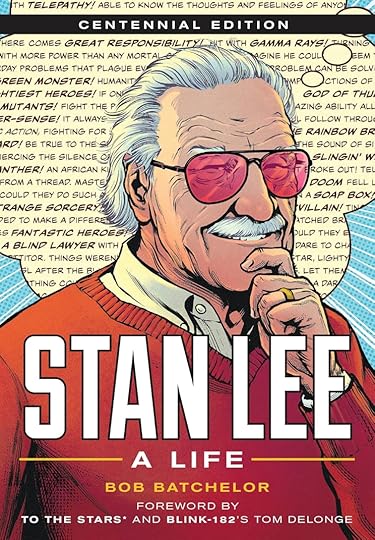
Stan Lee: A Life by Bob Batchelor; Foreword by Tom DeLonge of Blink-182 and To The Stars
The course isn’t about using AI to replace creativity—instead we focus on enhancing creation while staying rooted in cultural awareness, storytelling, and human empathy.
Why This Podcast and Course MattersIf you’ve read my books—like The Authentic Leader, Stan Lee: A Life, or Roadhouse Blues: Morrison, the Doors, and the Death Days of the Sixties—you know that I’m fascinated by how media, identity, and storytelling shape the modern world. This podcast and class bring those interests to life in real time.
“This podcast doesn’t just explain celebrity branding, it empowers you to understand your own story and how to share it effectively.”— Bob Batchelor
Today, anyone with a smartphone can become a brand. But that means the ability to think critically about representation, influence, and authenticity is more important than ever.
This project gives students and listeners the tools to navigate—and lead—in this complex space.
What’s Next?If you’re a student in my class—welcome. This podcast is your toolkit, guide, and creative prompt.
If you’re a communication professional, educator, marketer, or curious listener—Theories of Celebrity Branding will give you an insider view into how cultural identities are formed, challenged, and transformed.
👉 Listen now on Spotify
👉 Follow me on LinkedIn
👉 Explore upcoming courses at Coastal Carolina
👉 Learn more about me and my books
New episodes drop regularly on Spotify, Apple Podcasts, and wherever you listen.
🎧 Subscribe.
🧠 Think deeply.
📢 Tell your story.
🔥 Lead with purpose.
We’re just getting started.
June 26, 2025
WRITING TIPS TO BEGIN YOUR BOOK JOURNEY
Every author’s journey begins the same way: with a blank page and a glimmer of an idea. For aspiring nonfiction writers—and anyone who feels the tug of a story inside them—the hardest part is often starting. Whether you are a pop culture aficionado, would-be biographer, or someone drawn to capturing history, there is no perfect moment to begin your book.
You just start.
My own writing journey began in a high school newsroom, writing columns and dreaming of the bylines I might someday see in glossy magazines. I came of age in a college town (Slippery Rock, PA, home of Slippery Rock University) where professors and ideas swirled around me. Writing felt aspirational. A cherished teacher—Martha Campbell—rewarded my hard work with a sports column featuring my work: “Batchelor’s Bench.” I loved writing that column and holding our small high school newspaper in my hands.
As a college student, I sent essays to publications that were way out of my league. The rejections piled up, but the process enabled me to slowly build confidence with each reply—published or not. Every so often, there would be a kind note or something that looked like more than a stamped “rejection.” Those were glorious days!
About a decade later, by the time I wrote The 1900s (Greenwood, 2002), I approached it from a researcher’s mindset. I had yet to fully develop my narrative voice, let alone the courage to let it rise on the page. The 1900s, though, served as a foundation: meticulous research, structural discipline, and an unwavering commitment to learning during the writing process.

Photo by Aneta Pawlik on Unsplash
If you’re just beginning your book journey, here are five essential tips drawn from my own experience:
1. Establish a Writing Rhythm That Works for YouLife is demanding. Your writing process should complement—not fight—your daily responsibilities. Consistency, not volume, builds momentum. Even 20 minutes a day adds up.
2. Start with a Strong OutlineBefore I write a word, I create a detailed Table of Contents. For nonfiction, this map is critical. Think deeply about how you plan to open each chapter—those first lines carry a lot of weight.
3. Don’t Believe in Writer’s BlockWriting is work. Work requires discipline. When I feel creative fatigue, I don’t panic. Instead, I switch gears. Reading for pleasure, often on my Kindle, lets me absorb ideas passively and recharges my creative energy.
4. Let Your Curiosity Drive the ResearchEven after I have started writing, I keep researching. Every new detail might unlock a better sentence, a sharper insight, or a deeper connection. Curiosity is your most sustainable writing fuel.
5. Experiment with Storytelling TechniquesIn The Bourbon King, I explored a postmodern style in one chapter to capture the extravagance of George Remus’ legendary New Year’s Eve party. Creative nonfiction allows room for innovation…even in history-heavy narratives.
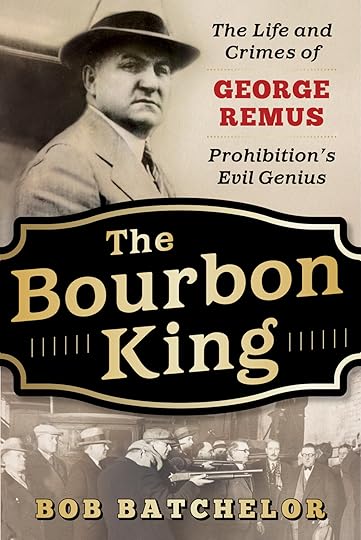
The Bourbon King by cultural historian Bob Batchelor
Most importantly, allow yourself time to grow. The voice you find in your first book might surprise you. It should.
To support your own writing journey, keep reading widely and learning from others. Books like The Bourbon King or Stan Lee: A Life can be models—narrative-driven nonfiction that brings culture, history, and people to vivid life. You can find these and other inspiring reads on Amazon and even save a bit with these offers.
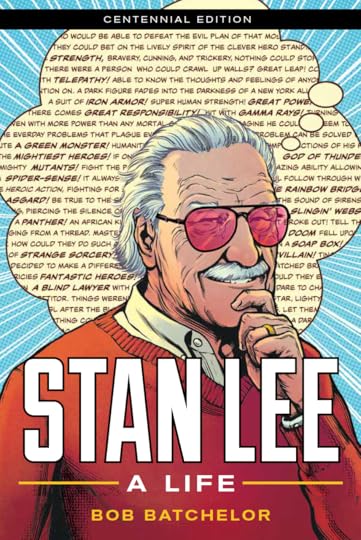
Stan Lee: A Life by Bob Batchelor
So what are you waiting for? Open that document. Name your project.
Take the first step. Your book is waiting.
I use Amazon affiliate links on this site—mainly links to books or other cool things. And if you buy via my links, it supports the site with no extra cost to you. This is a contributed post and may contain affiliate links. I was compensated for this post, but reviewed it and regard the article as a natural fit for my readers.
April 4, 2025
THE GATSBY CODE: A CENTURY OF DREAMS AND DISILLUSION -- PRE-ORDER EBOOK
“Bob Batchelor has written a powerful study of The Great Gatsby and its ability to resist the erosion and forgetfulness of time...and discovers a Gatsby we had never seen before—wounded and alone.”
—From the Foreword by Jerome Charyn, author of Maria Da Livina, a novel of Maria Callas
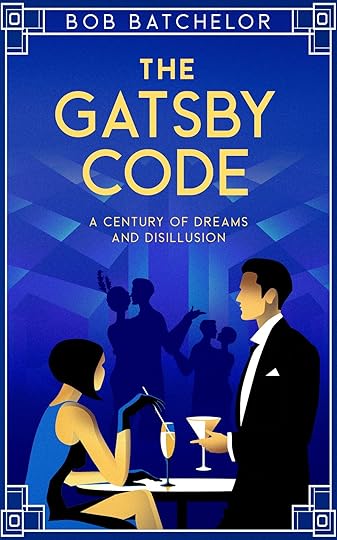
The Gatsby Code by award-winning cultural historian Bob Batchelor
“He believed in the green light...” And for the last hundred years, so have we.
In The Gatsby Code, cultural historian Bob Batchelor—award-winning author of acclaimed biographies and expert on American mythmaking—offers a masterful deep dive into one of literature’s most enduring icons: Jay Gatsby. As The Great Gatsby turns 100, Batchelor delivers a revelatory chronicle of the novel’s past, present, and future impact, weaving cultural history, literary analysis, and philosophical inquiry into a riveting exploration of why Gatsby still matters.
More than just a literary analysis or criticism, The Gatsby Code is a century-spanning cultural biography of a novel and its enigmatic protagonist. From Gatsby’s humble roots as James Gatz in North Dakota to his glittering rise and tragic fall in West Egg, Batchelor decodes the psychological and sociological layers of Fitzgerald’s antihero and the America he both embraced and exposed.
The book explores:
🍾 How Gatsby's longing mirrors America’s obsession with reinvention
🍾 The American Dream as both aspiration and illusion
🍾 The rise of wealth culture, bootlegging, and spectacle in the Jazz Age
🍾 Gatsby’s afterlife in World War II, Wall Street excess, and 21st-century influencer culture
🍾 The novel's entanglement with race, gender, class, and systemic inequality
🍾 How the green light became literature’s most famous symbol—and what it means today!
From real-life gangsters like George Remus, Al Capone, and Arnold Rothstein to modern branding and digital identity, Batchelor draws from history, sociology, literary studies, popular culture, and philosophy to show how The Great Gatsby became a mirror for American society—then and now.
Whether you’re a Fitzgerald scholar, a fan of literary classics, or simply captivated by Gatsby’s glittering dream, this is the definitive work for understanding how a novel about love, loss, and longing became an American scripture.
"So we beat on..." But what are we chasing? The Gatsby Code holds the key.
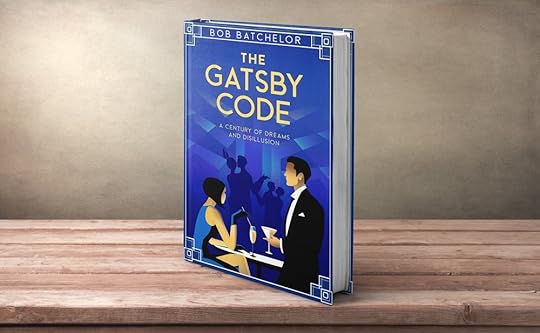
Explore Gatsby like never before in The Gatsby Code
March 20, 2025
HOW TO MAKE YOUR HOBBIES A PART OF YOUR WORK

Turning your hobbies into your work seems like a dream. After all, who doesn’t want to do the things they love all day long?
However, figuring out ways to make it happen is always challenging. Only a small minority of people ever manage it, so it can be difficult.
That’s where this article can help. It looks at some of the ways to incorporate your hobbies into your work so you can find more fulfillment on the job.
Here’s what you need to know:
Teach Or Share Your Passions
One option is to get out there and start teaching or sharing your passions. Many people are looking for instructions on how to gain more skills so they can get better at their hobbies and enjoy them more.
Think about sailing. Many people own boats, but only a few of them know how to take them to sea without a crew. That’s where you could come into the picture. You could teach them how to make the most of their passions and get out on open water.
The same goes for almost any hobby or activity you can think of. You could teach people to cook, learn Spanish, or fire a bow and arrow.
Find Overlapping Skills
Another way to thrive is to find overlapping skills. For example, you could look for a job that requires (in part) the things you’ve learned by pursuing a hobby.
Let’s say for instance, that you love DIY around the house. You fancy yourself handy with a power saw and electric drill and know you can help others. It doesn’t take a leap of the imagination to see yourself setting up a handyman business, fixing things for other people. After all, it’s something you love.
Or what about cooking? These days, there are all sorts of chef jobs that let you turn what you like doing into a career. Or if you’re really inventive, you could develop your own restaurant.
Freelance

Another option is to freelance. Taking gigs based on your skills and hobbies is an excellent way to get your name out there and start earning customers.
For example, if you are a creative writer, you could do gigs helping local students with their English exams. Alternatively, you could teach driving lessons to students based on your car racing days.
Whatever it is, there are usually opportunities to make money when you put your skills to use. You can try it piecemeal to test the waters before turning it into a full-time career.
Network With People Like You
Another way to make your hobbies a part of your work is to find people with similar interests as you at your company. This approach is subtle, but it can grow significantly.
For example, let’s say that you love five-a-side football and play it every weekend at local clubs. That’s fantastic. But if you can find other people at your work who enjoy the same hobbies, that’s even better. You can team up with them to start a club or a society at your work where they can all get involved. It could become a regular fixture of the working week, perhaps something you all go and do on a Thursday evening just because you want to.
Sometimes when you adopt this approach, you can find unexpected job opportunities related to your work. For example, if you’re someone who loves singing, your marketing department might ask you to do the soundtrack for the company ads. You never quite know what’s going to come up.
Suggest New Roles And Responsibilities
Another proactive approach is to suggest new roles and responsibilities for your work that involve your hobby. For example, if your hobby is coding, you could craft yourself a role where you create new integrated systems for your firm. These could link up different apps, giving colleagues holistic oversight of company processes and their tasks for the day.
You could also use any design skills you have to develop pitch ideas for your team. These could create a theme that they use for advertising and other outreach methods, allowing them to connect with more prospects. You could see holes in their current approach and how to improve them.
Turn It Into A Business

Finally, you could explore the possibility of turning your hobby into a full-time business. Chances are, if you’re interested in it, someone else will be, too.
Therefore, start small-scale and see what works. Then, continue scaling your enterprise until it becomes something unique and formative.
I use Amazon affiliate links on this site—mainly links to books or other cool things. And if you buy via my links, it supports the site with no extra cost to you. This is a contributed post and may contain affiliate links. I was compensated for this post, but reviewed it and regard the article as a natural fit for my readers.
March 13, 2025
5 TIPS FOR MOVING TO YOUR NEW OFFICE
One of the most exciting milestones for any business is moving from a garage or a spare bedroom to a fully functioning office. However as exciting as this is it's important to realise that it does come with its own challenges.
From ensuring that the space is ready for people to making sure that logistics are handled, the move can quickly become overwhelming if not properly planned. To make your office relocation as stress free as possible, we've got some tips for a successful move.

Ensure accessibility. One of the very first things that you should be checking when moving into your new office is that it's accessible. Whether that's with a good solid commercial railing outside for your employees to use, or you have ramps and lifts to allow people in wheelchairs and with mobility aids to get in and out, you need to ensure accessibility from the moment you move in. Multi-storey buildings should always have railings around the stairs or the ramps and you should also ensure that the building itself meets local accessibility codes.
Plan ahead. You want the move to go smoothly, so planning ahead is a must. You want to give your team plenty of time to organise and prepare for this transition. Create a timeline for the move and list out the milestones that you need to hit, such as the final date in your old space, the packing, and moving process. You should also keep your employees in the loop when it comes to moving, because there's every chance they may need to either relocate or move to a new role depending on where you're going. Planning well in advance helps you to avoid any last minute hiccups.
Don't forget to communicate. Not only do you need to communicate with your employees, but you need to communicate with your key stakeholders and customers. If there's going to be a move, people need to know about it well in advance so that they can plan for it too. Ask for employee feedback on the new space, because their comfort is going to be key in keeping the best people around. Addressing any concerns ahead of time can help to ensure that the office is conducive to productivity, especially once the move is complete.
Consider your new office layout. You need the space to be efficiently laid out for productivity and efficiency reasons. Think about the needs of both your employees, and the flow of the traffic within the office. How do you want to best maximise the available space? Meeting rooms, and whether your office furniture needs to be rearranged to create a more collaborative environment is your concern.
Update your business information. You can update your Business Contact information after the move. Ask your IT team to help you with changing your business website address, business cards and email signatures. Notify your clients, partners, suppliers, and employees about any moves and make sure that you've redirected any inventory post. You should also ensure that your new office is equipped with all of the necessary services and tools to support your operations.
This is a significant event for your business. With the right strategy and preparation, you can make this process much smoother. Prioritise accessibility and make sure to let everybody know what's happening. This is an exciting opportunity for you to create a more efficient and welcoming environment, so congratulations!
I use Amazon affiliate links on this site—mainly links to books or other cool things. And if you buy via my links, it supports the site with no extra cost to you. This post is sponsored and may contain affiliate links. I was compensated for this post, but reviewed it and regard the article as a natural fit for my readers.
March 4, 2025
THE GREAT GATSBY BY BOB BATCHELOR -- MARCH 20, 2025, THE UNIVERSITY OF MARY WASHINGTON "GREAT LIVES" SERIES
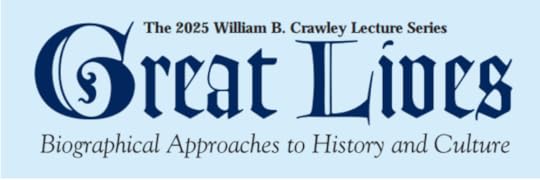
The 2025 Great Lives Lecture Series — Jay Gatsby by Bob Batcheelor
In 1925, F. Scott Fitzgerald produced his third novel, a slim work for which he had high expectations. Despite such hopes, the novel received mixed reviews and lackluster sales. Over the decades, however, the reputation of The Great Gatsby has grown, and hundreds of millions of copies have been sold.
One of the bestselling novels of all time, it is also considered one of the most significant achievements in twentieth-century fiction. But what makes Gatsby great? Why do we still care about this book a century after it was published? And how does Gatsby help us make sense of our own lives and times?
Bob Batchelor explores the birth, life, and enduring influence of The Great Gatsby—from the book’s publication in 1925 through today’s headlines filled with celebrity intrigue, corporate greed, and a roller-coaster economy. Batchelor explains why and how the novel has become part of the fiber of the American ethos and an important tool in helping readers to better comprehend their lives and the broader world around them.
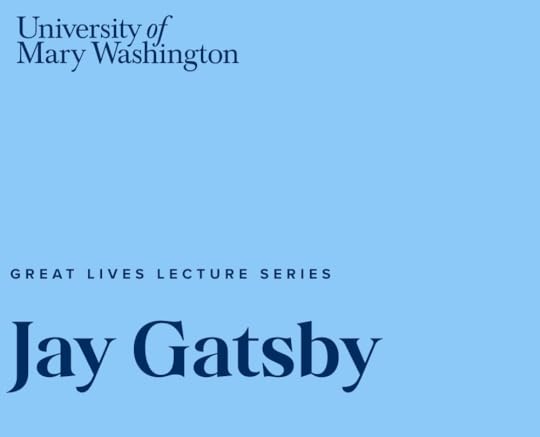
Join Bob on March 20, 2025 for the UMW Dining Lecture: 7:30 p.m. in George Washington Hall’s Dodd Auditorium. There will be a question-and-answer session and book-signing.
ABOUT BOB BATCHELOR
A three-time winner of the Independent Press Book Award, cultural historian Bob Batchelor has been hailed as “one of the greatest non-fiction writers and storytellers” by New York Times bestselling biographer Brian Jay Jones (like Batchelor, a previous Great Lives lecturer). His books examine modern popular culture icons, events, and topics, from comic books and music to literary figures and history’s outlaws.
Batchelor is the author of 16 books, editor of 19 books, and has been published in a dozen languages. An interdisciplinary writer, he has published books on Stan Lee, Jim Morrison and the Doors, Bob Dylan, Mad Men, and John Updike, among others. His work has appeared or been featured in the New York Times, Cincinnati Enquirer, Los Angeles Times, PopMatters, and Time. He created the podcast “John Updike: American Writer, American Life” and “Tales of the Bourbon King: The Life and True Crimes of George Remus.” He has appeared as an on-air commentator for The National Geographic Channel, PBS NewsHour, PBS, the BBC, and NPR.
Bob earned his doctorate in American Literature from the University of South Florida and an M.A. in History from Kent State University after graduating from the University of Pittsburgh. He has taught at universities in Florida, Ohio, and Pennsylvania, as well as Vienna, Austria. Bob and his wife, antiques and vintage expert Suzette Percival live in North Carolina and have two daughters in college.
February 20, 2025
3 REASONS YOUNG PROFESSIONALS SHOULD READ THE AUTHENTIC LEADER

The workplace is undergoing constant change. As a result, young professionals are stepping into roles that demand adaptability, resilience, and a strong sense of purpose. This type of people-first leadership is at the heart of authentic leadership.
The Authentic Leader: The Power of Deep Leadership in Work and Life is a guide for anyone who aspires to lead with integrity and impact, no matter what stage they are at in their career stage. Here’s why young professionals should read this book and the lessons they’ll take away.
1. Leadership Starts Before the TitleMany young professionals assume leadership begins with a promotion, but The Authentic Leader teaches that leadership is a mindset, not a job title. Leadership starts with self-awareness, responsibility, and the ability to positively influence others—whether you’re managing a team or contributing as an individual.
Lesson Learned: Great leaders take ownership of their work, build trust, and inspire those around them long before they reach the executive suite. By embracing leadership principles early, young professionals set themselves apart and create additional opportunities for growth.
2. Authenticity Builds Long-Term SuccessIn a world that rewards personal branding and social media presence, it is easy to fall into the trap of trying to be who you think others want you to be. The Authentic Leader emphasizes that real success comes from being authentic, aligning your values with your work, and building trust through transparency.
Lesson Learned: The strongest leaders—now and throughout history—have been those who remain true to their values, communicate honestly, and foster real connections. Young professionals who develop these habits early will build lasting credibility and meaningful careers.
3. Emotional Intelligence is the Key to InfluenceThe workplace is filled with diverse perspectives, challenges, and moments of uncertainty. The Authentic Leader highlights the power of emotional intelligence in navigating relationships, resolving conflicts, and creating positive workplace cultures.
Lesson Learned: Young professionals who practice empathy, active listening, and emotional self-awareness will be better equipped to collaborate, lead, and create a lasting impact in their industries.
Final ThoughtLeadership isn’t something you wait for over days, months, and years. It is your responsibility to develop the necessary skills every day. The Authentic Leader provides the tools and insights young professionals need to become confident, purpose-driven leaders in a fast-changing world. By understanding these principles early, they can build careers that are not only successful, but also deeply fulfilling.
Are you ready to take the first step toward authentic leadership? Pick up The Authentic Leader and start shaping your leadership journey today.

The Authentic Leader by Bob Batchelor



